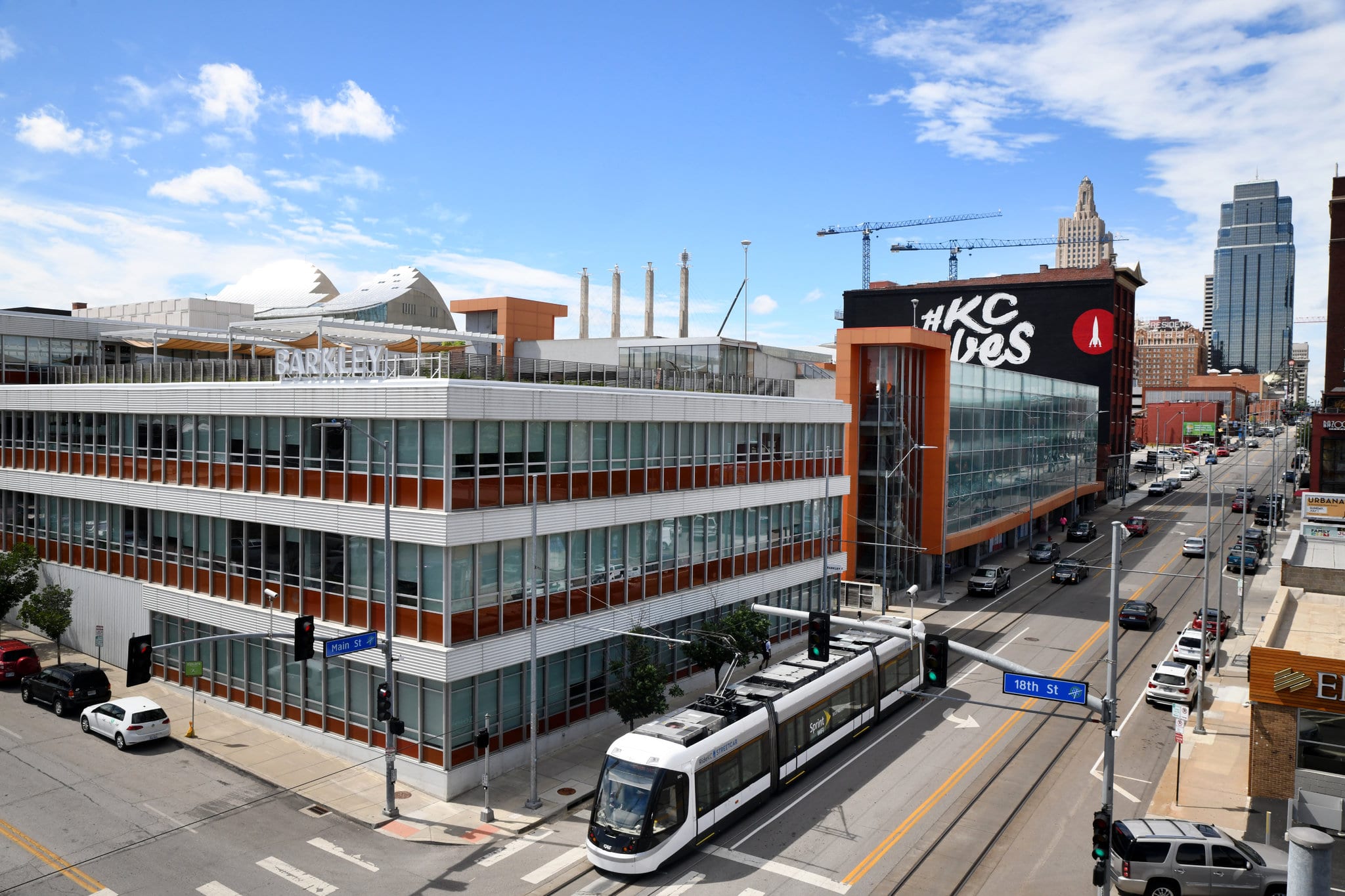NY Times shines global spotlight on Downtown KC

The KC Streetcar: Credit Anna Petrow for The New York Times
The Perfect Way to Explore Modern Kansas City? A Streetcar, Believe It or Not
The contemporary trolley, introduced in 2016, takes visitors to an arts district, an entertainment district and a happy state of mind.
By Richard Rubin, The New York Times
In 2002, when Sylvester “Sly” James moved his law office to downtown Kansas City, Mo., he made a wager with a colleague. “I bet him I could walk across Main Street naked at 6 p.m. and nobody would see it,” he recalled. “And the proof that I was right is that no video of that has ever shown up on YouTube.” Downtown, he said, “was freakin’ desolate.”
A decade later, Chris Hernandez remembered, he saw an item on the local news about a two-car accident downtown one evening at 7. “I took it as a sign that things were turning around,” he said. “There were actually two cars there to hit each other!”
As it turns out, Mr. Hernandez was onto something: Things were, in fact, starting to turn around. Today Kansas City can be said to have actually achieved the elusive dream of scores of proud old American cities that have seen better days: It has revived its downtown, which now skews closer to “bustling” than “desolate” many nights.
Mr. Hernandez is the city’s director of communications; Mr. James is its mayor. Both can rattle off countless examples of nearly miraculous urban revitalization: thriving businesses in storefronts that stood vacant for years; gleaming new high-rise apartment blocks that are largely (some say entirely) rented out even before they’re completed; vibrant arts and culinary scenes. But you can see what is arguably the single best embodiment of the phenomenon for yourself at regular intervals as you stroll along — or even stand still on — downtown’s Main Street.
If at this point your mind absolutely must drift to 1940s musical lyrics, I recommend nudging it away from “everything’s up to date in Kansas City” and toward “clang clang clang went the trolley” (even though, technically, that one is set in St. Louis; same state, anyway).

Yes: Kansas City has a trolley. And not one of those old-timey trolleys that doesn’t go much of anywhere and goes there slowly. The one in Kansas City is sleek. Modern. Has air-conditioning and Wi-Fi.It runs a real route — 2.2 miles from end to end, then back again — through the heart of downtown.
At peak times, like rush hour, one comes along every 10 minutes; off-peak, it’s more like every 12 to 18 minutes. (Every stop has digital kiosks announcing how soon the next one will be along.) It starts running at 6 a.m. and doesn’t stop until midnight on weeknights, 2 a.m. Fridays and Saturdays. (This being the Midwest, on Sundays it starts late — 7 a.m. — and shuts down early, at 11 p.m.)
Oh: And it’s free.
And not, technically, a trolley; they take great care here to remind you (cheerfully) that it’s a streetcar. That may seem like a distinction without a difference, but it reflects the way the city and its denizens view it. A trolley, in this day and age, is a self-conscious quaintness, almost an amusement-park ride; a streetcar, on the other hand — as Mr. Hernandez explained — is more of a “pedestrian accelerator.”
And, as it turns out, an attraction, too.
In my experience, the whole “Midwestern nice” thing can be overstated; but not when it comes to Kansas City. Step off the KC Streetcar (as it is officially known) and look around as if you don’t know where you are going and a passer-by will stop and ask where you’re trying to get to. Sport that expression while you’re still riding it and someone sitting across the aisle from you will do the same thing. Ask them how they like the streetcar and they will tell you, sincerely and in a fair bit of detail.And they do like it. They ride it. The city — which has a population just under a half-million — projected one million riders in the streetcar’s first year; it got twice as many by day 364. A year later that figure exceeded four million.
No one would have predicted such a phenomenon as recently as the beginning of this decade.Back then, Mr. James recalled, “things were slow here. People were depressed. They didn’t believe the city could do things.”
But then Kansas City won a lottery of sorts: In the spring of 2011 — just as Mr. James was starting his first term as mayor — Google announced that it would be inaugurating its broadband internet and television service, Google Fiber, there. “That was a big boost,” Mr. James recalled. “Google was putting us on the map — we could leverage that.”
They did. The streetcar — which made its first run on May 6, 2016 — wasn’t by any means the only element of downtown’s revitalization, but it was perhaps the boldest, and certainly the most dynamic. “It’s been a tremendous catalytic thing,” Mr. James said. “It’s created much more flow—more profits for businesses downtown, more foot traffic.” In the streetcar’s first year of operation, revenue from sales taxes along its route — an area known as the Transportation Development District, or T.D.D. — rose 54 percent, as opposed to 16 percent citywide.

If this seems like a boon for those businesses, you could say they earned it: “They decided it would be free,” the mayor explains — paid for by a special assessment on business owners and residential landlords along the T.D.D. (The construction boom in new high rises that are rented out before they’re even completed would seem to indicate that landlords are O.K. with the surtax, too.) “The funds,” Mr. James said, “are more than sufficient to cover the costs. It’s worked out very well.”
Unlike most successful ventures, few individuals have claimed credit for Kansas City’s streetcar; most, when asked, will give you an answer like Mr. Hernandez’s: “It was a very grass-roots effort,” he said. “How to create the streetcar, where it should go. Businesses and residents were involved at every step — where to have stops, their exact placement, even what they should look like.”
The route they all devised does a good job of introducing downtown Kansas City to both tourists and locals who had never really gotten acquainted with it before — and, perhaps coincidentally, showcasing the area’s revival.
It starts and ends at the point where decades of visitors arrived at and departed from the city: Union Station, an imposing 1914 classical structure that, despite its grandeur and the fact that it once hosted more than a half million travelers a year, was actually closed for a decade and a half in the 1980s and 90s; today it’s a museum as well as a functioning rail depot, and the anchor of a neighborhood that includes the Crown Center,an indoor shopping and entertainment complex, and the National World War I Memorial and Museum.

Heading north, it stops next at the Crossroads Arts District, a neighborhood of old warehouses and factories that have been reclaimed as live/work spaces and is now home to a lively arts scene. Then comes the Power & Light District — named for an Art Deco 1931 skyscraper that was for decades both the home of the local electric utility company and the tallest building west of the Mississippi — which is the city’s newest entertainment district; it features the Sprint Center (a sports and concert arena), Kansas City Live! (a block-square outdoor atrium surrounded by pubs and restaurants and containing a performance stage and massive Jumbotron), most of those new residential high rises and, naturally, the world headquarters of H & R Block.
The next stop is Metro Center, home to government buildings, business offices, hotels, cafes and restaurants; then the Library stop, named for the city’s Central Library, which occupies a 1906 bank building that features 13-foot-high bronze doors, a roof garden with a life-size chess set, and a basement vault that has been converted to a movie theater; then the North Loop, which doesn’t have much of note yet except a neat older Western Union building and a neat newer office building known as “the flashcube” because, well, it looks like a flashcube; and finally the River Market, which includes old warehouses that have been converted to lofts, lots of restaurants and an expansive farmer’s market that has been going year-round since 1857.
There are edifices worthy of a good long look all along the route, but none more arresting than what you will spot looking out the window to your left as you shuttle from Crossroads to Power & Light: There, up on a hill, is the Moshe Safdie-designed Kauffman Center for the Performing Arts, which opened in 2011 and which, depending upon your aesthetic sensibilities, you will find either sublime or terrifying.

It contains two 1,500-plus-seat theaters, each of which, I am told, has fine acoustics; the building, which sits on more than 18 acres, is said to have been so well-designed that it can and often does host two different performances simultaneously without any aural crossover. In addition to hosting touring companies, the city’s symphony orchestra and opera and ballet companies all call it home. “We have a very strong arts scene here in Kansas City,” Jean Luzader, a volunteer at the Kauffman Center, told me. “People think we have cows running through the streets, you know, but we don’t.”
Streetcars — once almost ubiquitous, later almost extinct — are having a moment: In the past five years, lines have also started operating in Salt Lake City, Tucson, Dallas, Cincinnati and Detroit. (Two others, in Milwaukee and Oklahoma City, are scheduled to open by the end of this year.) Some have been more successful and transformative than others, but few seem to have had the impact of Kansas City’s. It’s the only one that’s free to ride, but what really makes it distinct is the palpable sense that is more than just a way of moving people around: It’s a movement — one that, judging by the crowds riding on weekends, transcends age and ethnicity.
Everyone seems to like each other, too. “When you’re on the streetcar,” Mr. Hernandez said, “you truly get a sense of community. It gets people off their phones and talking to each other again. I see it every time I’m on it. I think people who are from Kansas City are having fun talking to visitors and telling them about places they should check out.”

Of course, many of them — locals and visitors — are there to check out the streetcar itself.Riding it around and around will strike a certain type of person as a fine — not to mention economical — way to pass a few hours. Technically, you’re supposed to get off and re-board every time it pulls into Union Station; but this being the Midwest, no one will get too terribly upset if you stay put instead. Just smile.
Richard Rubin is the author of “The Last of the Doughboys” and “Back Over There.”
Correction:
An earlier version of this article inaccurately described Kansas City’s location in relation to the Mississippi River. It is west of the river, not east.
